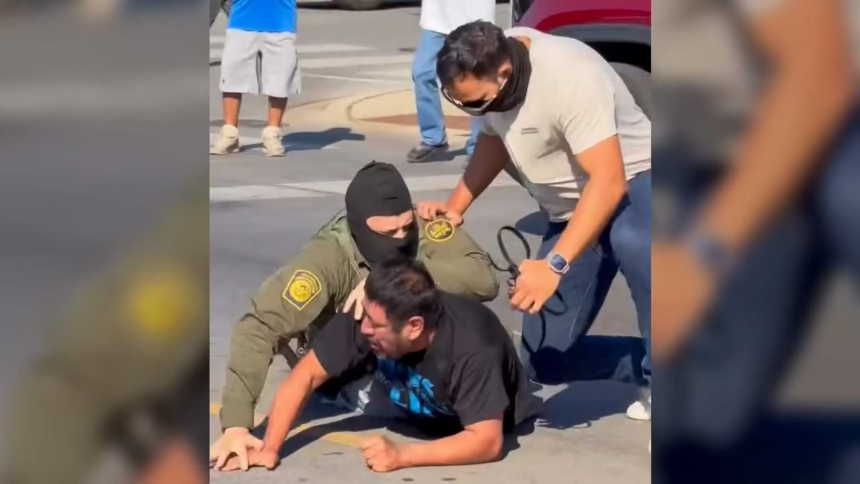Under pressure from the White House to rapidly bolster resources to combat illegal immigration, the U.S. Immigration and Customs Enforcement (ICE) agency faces serious questions about the quality of its recruitment.
According to a Politico article based on revelations from NBC News and The Atlantic magazine, candidates were allegedly admitted to training before security checks were completed, and some have backgrounds incompatible with the role of federal agent.
Recruits Admitted Before Completion of Background Checks
According to Politico, citing current and former Department of Homeland Security (DHS) officials, ICE allegedly integrated recruits into its training academy while mandatory procedures were not yet fully completed.
Three DHS officials—one current, two former—indicated that after the fact, certain candidates were found to have failed drug screening tests, have disqualifying criminal records, or fail to meet minimum physical and academic requirements.
Yet ICE’s official policy requires that all candidates pass drug tests and security checks conducted by human resources before being admitted to training. In practice, the accelerated recruitment campaign initiated under the Trump administration allegedly led to circumventing this logical order.
In one case cited by NBC and reported by Politico, staff at the Brunswick, Georgia training center discovered that a recruit had previously been prosecuted for robbery with violence and assault and battery in connection with a domestic violence incident. Additionally, more than 200 recruits were allegedly dismissed during training because they did not meet the agency’s hiring criteria.
“People Are Slipping Through the Cracks”
Internal data reviewed by NBC shows that the majority of these dismissals involve candidates unable to meet physical or academic standards. A smaller number—”just under ten” according to the report—was removed for more serious reasons: criminal backgrounds, failed drug tests, or security issues that should have been detected before their arrival at the academy.
A current DHS official, quoted by NBC and reported by Politico, summarizes concerns within the administration:
“There are absolutely concerns that some people are slipping through the cracks.”
DHS Pushes Back: “The Numbers Are Not Accurate”
In response to these revelations, DHS spokesperson Tricia McLaughlin contested the media’s conclusions. In a statement provided to NBC and reported by Politico, she stated:
“The numbers you cite are not accurate and reflect a subset of candidates from the initial classes at the basic academy.” She emphasized that “the vast majority of new agents hired during this wave of recruitment are experienced police officers who have already completed training at a law enforcement academy,” and that this profile is expected to represent “more than 85% of new hires.”
The spokesperson also noted that recruits from law enforcement benefit from a streamlined validation process but remain “subject to medical, physical fitness, and background requirements.”
High Failure Rate and Lowered Physical Standards
NBC’s revelations follow another notable article published in October by The Atlantic. The magazine reported that more than one-third of ICE candidates fail selection tests, which can reduce a planned class of 40 people to just a few students.
A career ICE official, quoted anonymously by The Atlantic, minced no words:
“It’s pathetic.”
In an attempt to attract more candidates and fill the staffing levels required under the Trump government, ICE has relaxed its physical criteria. According to the agency’s official website, the physical fitness test now comprises four timed exercises: 32 sit-ups in under one minute, 22 push-ups in under one minute, a 220-yard (approximately 200-meter) sprint in under 47.73 seconds, and a 1.5-mile (2.4 km) run in under 14 minutes and 30 seconds, Politico explains.
These tests, the site specifies, are designed to assess “muscular strength and endurance, anaerobic and aerobic power, and cardiovascular endurance” and must be completed in order, with less than five minutes of rest between each exercise.
Furthermore, the training duration at the Federal Law Enforcement Training Center (FLETC) in southern Georgia has been reduced from 16 to 8 weeks, supplemented by virtual modules before and after on-site attendance.
ICE has also eliminated the age limit and college degree requirement: anyone aged 18 to 60 can now apply, provided they pass physical and security examinations.
“Candidates Allergic to Sports” and $50,000 Bonuses
Despite these adjustments, authorities appear aware of the declining caliber of some candidates. According to Politico, an internal memo sent on October 5 to DHS officials mentions “a considerable number of candidates allergic to physical activity” arriving at the academy, after having “misrepresented” or “overestimated” their physical condition on application forms.
An internal report published in August by ICE and cited by Politico shows, however, that the recruitment campaign generated significant interest: more than 121,000 applications were allegedly submitted. McLaughlin again insists that the one-third failure rate concerns “only a subset of candidates from the initial basic training classes” and not all new recruits.
To make positions more attractive, ICE now offers a $50,000 hiring and retention bonus, student loan repayment programs, and other benefits. Candidates who fail the physical component can sometimes be redirected to administrative positions, but officials have had to consult their legal counsel to determine under what circumstances job offers can be withdrawn outright when profiles do not correspond to any alternative role.
At this stage, Politico notes, it remains difficult to determine how many agents ICE has actually succeeded in recruiting as part of this massive recruitment offensive. This uncertainty fuels a fundamental debate about balancing quantity and quality of personnel in an agency at the heart of the Trump administration’s immigration policy, where any flaw in recruitment vetting can have serious consequences for public safety and confidence.








